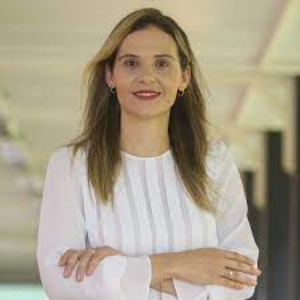Title : Additive manufacturing of customizable bioactive scaffolds for bone tissue engineering
Abstract:
Bone tissue engineering is a promising strategy to treat skeletal injuries by using 3D matrices, known as scaffolds, to facilitate the regeneration of damaged tissue. Given the importance of bone transplantation, the exploration of additive manufacturing techniques for bone applications has gained considerable attention. In this study, we focused on fabricating bioactive scaffolds with different compositions that can be tailored according to the specific demands of individual patients, using extrusion-based additive manufacturing technology (Allevi 2, USA). The scaffolds developed in this investigation consisted of a composite comprising poly(lactic-co-glycolic) acid (PLGA), a bioresorbable polymer, and hydroxyapatite (HA) nanoparticles, recognized for their osteoconductive properties. The scaffolds were engineered alternately with two bioinks containing different HA concentrations. Scanning electron microscopy (SEM) analysis confirmed the attainment of targeted pore sizes of 450 μm within the scaffolds. Fourier-transform infrared spectroscopy (FT-IR) enabled the identification of characteristic peaks corresponding to PLGA and HA, while revealing the absence of solvent-related signals. Additionally, the thermogravimetric analysis (TGA) demonstrated the appropriate incorporation of HA at the desired concentration. Furthermore, in vitro evaluations reinforced the fabricated scaffolds' osteoconductive nature and the engineered scaffolds' biocompatibility with a pre-osteoblast cell line. The successful fabrication of the proposed scaffolds shows their potential in facilitating osseointegration for bone applications. Additive manufacturing techniques confer the notable advantage of tailoring the scaffolds to accommodate patient-specific requirements. By combining PLGA and HA nanoparticles, these scaffolds offer biocompatibility and osteoconductivity, both crucial to increase the regeneration of bone tissue. The variation in pore sizes explored presents a valuable opportunity to modulate the shape, and mechanical and biological properties of the scaffolds to match diverse bone defect scenarios. In summary, this study showcases the successful fabrication of customizable bioactive scaffolds. Through the chemical and thermal characterizations, using FT-IR and TGA, it was possible to establish the scaffolds' structural integrity and compositional fidelity. Moreover, the demonstrated osteoconductive properties of the scaffolds in vitro and their biocompatibility substantiate their efficacy as a promising platform for bone tissue engineering applications.
Audience Take Away Notes:
- The audience will learn about fabricating customizable bioactive scaffolds for bone tissue engineering using additive manufacturing techniques
- This knowledge will benefit researchers, scientists, and engineers in the field by providing insights into scaffold fabrication, characterization techniques, and the use of specific materials such as polymers and nanoparticles
- The study offers a practical solution by demonstrating successful scaffold fabrication, simplifying the design process and potentially enhancing efficiency in developing bone tissue engineering solutions
- The research improves design accuracy by providing new information on scaffold composition, variation in pore sizes, and the use of bioactive materials, thus advancing the field of bone tissue engineering and personalized medicine


